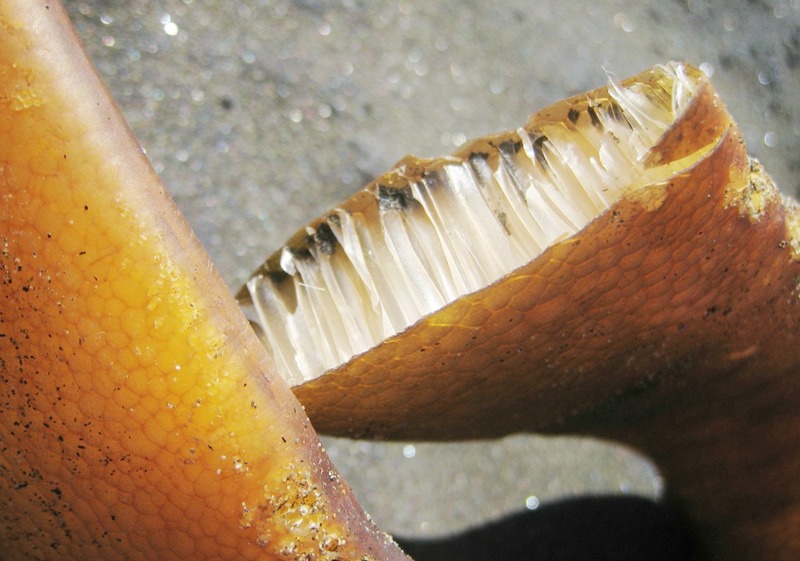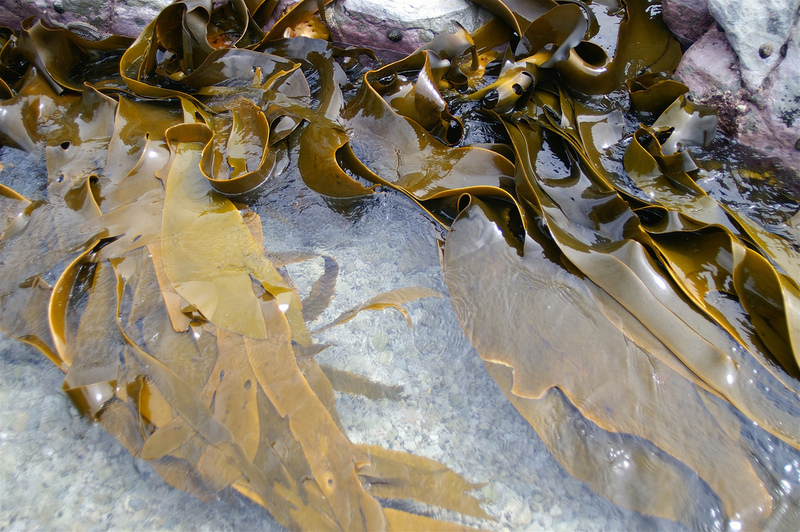Note that since you haven’t signed in, you can only view the posts.
If you want to create your own posts or comment on existing ones them at no cost please register or sign in.
Stories
Novel uses for Bull Kelp or Rimurapa
By Kimberley Collins
When I say "I need kelp", don't assume I am making a bad seaweed pun. When I make a joke, it's much more noticea-bull. I actually want to talk about bull kelp - specifically how it has been used in novel ways by communities and cultures.
Bull kelp or rimurapa (Durvillaea spp.) is a large species of seaweed found along the exposed rocky coasts of New Zealand and throughout the Southern Ocean. It can grow to ten metres in length and is often seen swirling in the waves of Southern New Zealand. Those swirling blades have a unique feature - a honey-comb like structure within the walls allow the kelp to float to the surface and avoid it being destroyed by the strong waves. On the other end, attaching the plant to the rock, is the strong, circular holdfast. This keeps the kelp firmly attached - it takes a powerful storm to dislodge one.
Bouncy Bull Kelp.
The stipe of bull kelp makes an excellent bouncy ball! This discovery came from Twitter when I posted a picture of myself "being a typical North Islander" and standing with a piece of washed up bull kelp during the teacher's workshop I attended at Tomahawk. Nicola from In Our Nature replied and mentioned you can make a bouncy ball from the bull kelp! Excited, I did some research and found this fantastic article on Te Ara confirms it. In its preferred habitat on the exposed rocky coasts of Southern New Zealand, bull kelp must withstand forces equivalent to 1100 km/h on land. Between the sturdy holdfast and the blades mentioned above, you will find the stipe (also known as a stalk). These have to be able to stretch and bend without snapping, and research suggests they contain a chemical alginate to allow this elasticity. The same chemical allows the creation of bouncy balls! So next time you see bull kelp washed up, grab that stipe and start experimenting!
Bull Kelp & Mutton Bird.
Tītī (also known as sooty shearwaters) are traditionally harvested by Māori for food, oils, and fats. Juvenile birds that are about to fledge are collected from their burrows and preserved in salt. The blades of bull kelp (rimurapa) create pōhā - bags used to transport and preserve the birds. The kelp bags preserve food safely for up to two or three years thanks to those honeycomb-like structures I mentioned earlier. Air is trapped in the honeycomb-like structures, effectively making the outer skin air-tight. The preparation of pōhā involves harvesting the rimurapa, inflating it, and placing it outside to soften the skin as is explained below.
"According to Ngāi Tahu tradition, January or February is the time to start making pōhā. First, the rimurapa blades are cut to the right length and hollowed out. Then, in March, the pōhā hau (the hollowed out blades) are inflated and placed outside to soften in the night dew. Finally, the pōhā are rolled up and taken to the Tītī Islands for the start of the mutton bird season in April.
Weka (wood-hens) and tītī (mutton birds) are prepared by wrapping the birds in pouaka (fescue grass), leaving them in a trench for a few days, and then soaking them in an ipu (wooden bowl) in water heated by hot stones. The birds are kept there until their fat has seeped out and is lying at the bottom of the ipu. Once this process is complete, the birds are placed into pōhā and covered with their own fat. The top of the pōhā is plugged with a wooden plug and the outside is protected with kiri tōtara (tōtara bark), before the whole pōhā is placed in a flax kete (bag) and bound."
From: Poha (Bull Kelp) on the Te Papa Tongarewa website.
Overall, bull kelp is a pretty useful and interesting species. Does your whānau have their own novel use for bull kelp? Have you got any good recipes for our dear Durvillaea?
| Current Blog Topics |
|---|
| Identify |
| Weird and Wonderful |
| Activities |
| People and Places |
| Investigate |
| Environment |
| Stories |
| Other |

